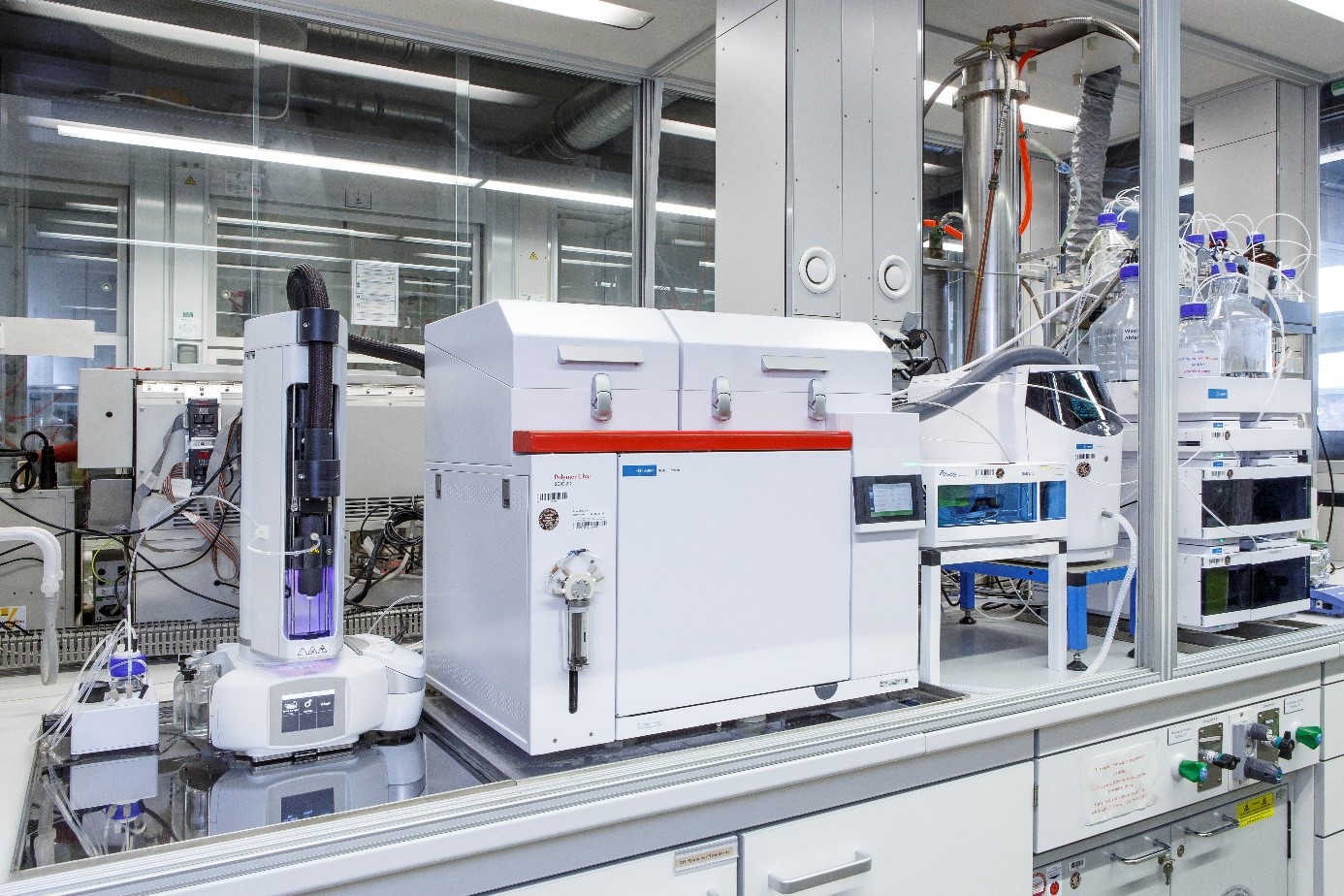Gel permeation chromatography (GPC), also known as size exclusion chromatography (SEC), is a standard method for determining the distribution of the molar mass and averages derived from it. Instead of the term “molar mass”, the term “molecular weight” is also commonly used. The molar mass distribution and the average molar masses give information about central properties of a polymer/plastic. Among these are the toughness, the melt viscosity and the elastic properties of the melt. By comparing the molar mass distribution of different samples it is, furthermore, possible to draw conclusions about degradation and cross linking processes. Thus, GPC is one of the most important characterization techniques for polymers.
As GPC is a liquid chromatographic method, it is absolutely necessary to dissolve a sample for an analysis. Depending on the polymer, different solvents may be suitable. However, it is known that the very common polyolefins (polyethylene (PE), polypropylene (PP), …) cannot be dissolved at room temperature. Only at temperatures >> 100 °C it is typically possible to dissolve them. Thus, a GPC characterization of polyolefins has to be carried out in specific solvents at approx. 140 – 160 °C. This necessitates instruments that reach the aforementioned temperatures during all steps of the analysis process (from sample injection over separation to detection).
 Fraunhofer Institute for Structural Durability and System Reliability LBF
Fraunhofer Institute for Structural Durability and System Reliability LBF